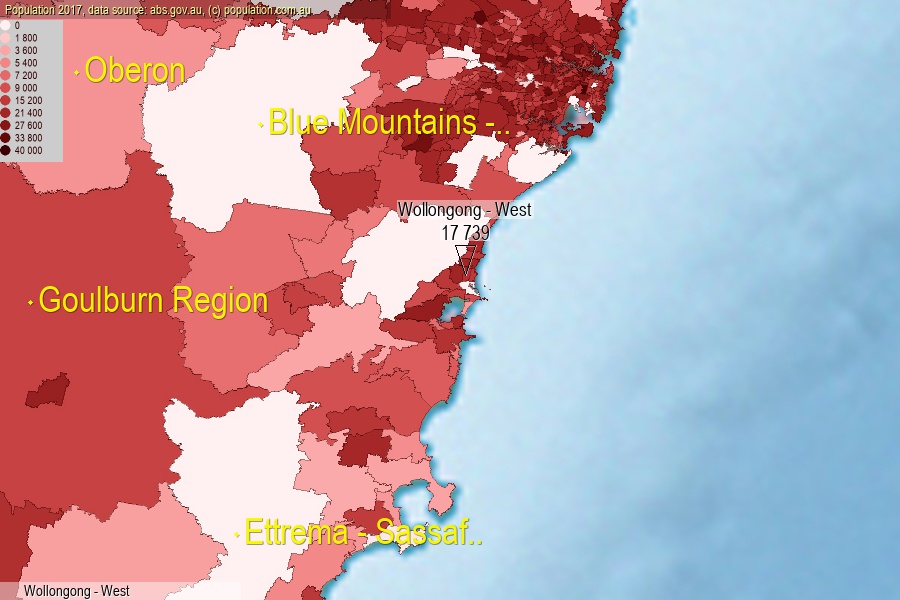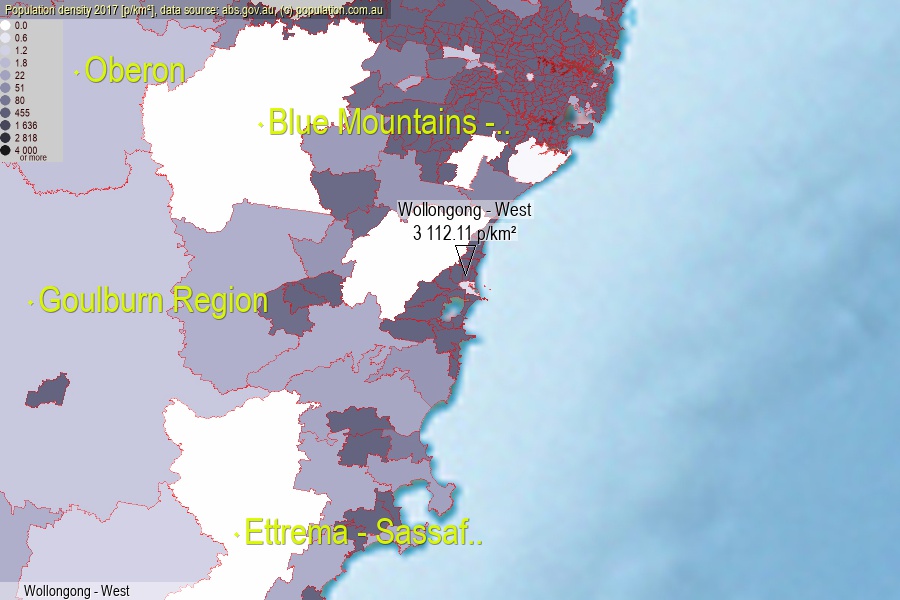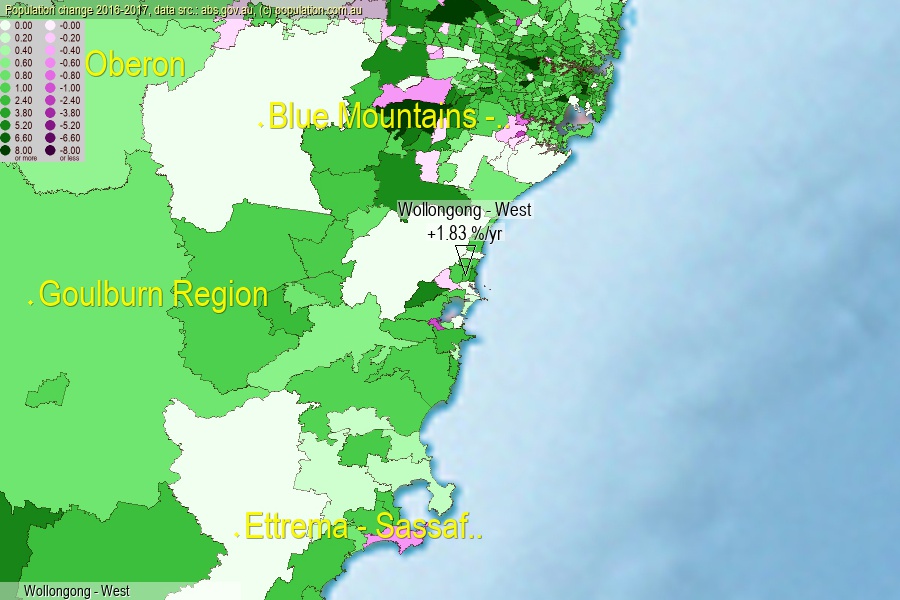 population.com.au
population.com.auLast official estimated population of Wollongong - West (as Statistical Area Level 2) was 17 739 people (on 2017-06-30)[2]. This was 0.07% of total Australian population and 0.223% of NSW population. Area of Wollongong - West is 5.70 km², in this year population density was 3 112.11 p/km² . If population growth rate would be same as in period 2016-2017 (+1.83%/yr), Wollongong - West population in 2025 would be 20 511. [0]



Click to enlarge. Wollongong - West is located in the center of the images.
Population [people], population density [p./km²] and population change [%/year] [2]
View borders » (new window) [4]
[2001-2002] +1.12 %/Yr.
[2002-2003] +0.39 %/Yr.
[2003-2004] +0.01 %/Yr.
[2004-2005] -0.35 %/Yr.
[2005-2006] +0.01 %/Yr.
[2006-2007] +1.44 %/Yr.
[2007-2008] +1.97 %/Yr.
[2008-2009] +1.62 %/Yr.
[2009-2010] +1.94 %/Yr.
[2010-2011] +1.76 %/Yr.
[2011-2012] +0.78 %/Yr.
[2012-2013] +0.90 %/Yr.
[2013-2014] +1.47 %/Yr.
[2014-2015] +1.01 %/Yr.
[2015-2016] +2.18 %/Yr.
[2016-2017] +1.83 %/Yr.
[0] Calculated with linear interpolation from officially estimated population
[1] Read more about SA2 and Australian Statistical Geography Standard (ASGS) on abs.gov.au
[2] Population data from Australian Bureau of Statistics (Population and density: 2017; change: 2016-2017)
[3] Digital Boundaries: Australian Statistical Geography Standard (ASGS) 2016.
[4] Border coordinates are simplifyed using Ramer-Douglas-Peucker algorithm.